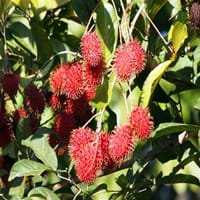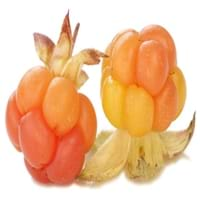Health Benefits
Anti-oxidant properties, Boosts immune system, Skin rejuvenation, Strengthening of bones
Cancer prevention, Heart care
General Benefits
Antiseptic properties, Cures headache, Removes waste from kidney
Anti oxidant properties, Boosts immune system, Digestive aid, Improves blood circulation, Maintains healthy cholesterol level, Strengthens bones
Skin Benefits
Hydrates skin
Anti-aging benefits, Reduces wrinkles, Skin rejuvenation
Hair Benefits
Good conditioner
Protects hair
Allergy Symptoms
Chest pains, Rhinitis, Wheezing
NA
Side Effects
Unknown
Allergic reaction
Best Time to Eat
As a snack in the late afternoon, Don't consume at night and before bed, Eat the fresh ones, avoid mixing with any other foods, don't eat after meal., Morning time (before lunch)
As a snack in the late afternoon, Don't consume at night and before bed, Eat the fresh ones, avoid mixing with any other foods, don't eat after meal., Morning time (before lunch)
Vitamin A (Retinol)
Not Available
Vitamin B5 (Pantothenic Acid)
Not Available
Vitamin B6 (Pyridoxin)
Not Available
Vitamin B9 (Folic acid)
Not Available
Vitamin C (Ascorbic Acid)
Vitamin E (Tocopherole)
Not Available
Vitamin K (Phyllochinone)
Not Available
Lutein+Zeaxanthin
Not Available
Phytosterol
Not Available
Calories in Fresh Fruit with Peel
Calories in Fresh Fruit without Peel
Not Available
Not Available
Calories in Frozen Form
Not Available
Calories in Dried Form
Not Available
Calories in Canned Form
Not Available
Calories in Jam
Not Available
Calories in Pie
Not Available
Type
Tree fruit, Tropical
Berry
Season
Early summer, Early winter, Late fall, Late spring
Winter
Varieties
Rongrien, Chompu, Rapiah, Bingjai and Lebak Bulus
Not Available
Color
Coral red, Yellow
Orange, Pink, Yellow
Inside Color
Greyish-white
Orange
Taste
Sour, Sweet
Sweet-Sour
Origin
Unknown
Arctic Tundra
Soil Type
Clay, Loam
Loam, Well-drained
Climatic Conditions
Humid
Cold, Warm
Facts about
- Oils extracted from its seeds is used to make soaps and candles.
- 'Rambut' means hairy in Malay.
- It makes the best hair mask.
- Seeds are edible and healthy too.
- Cloudberry is also called as bakeapple, knotberry , knoutberry, aqpik or low bush salmonberry.
- In Nordic countries, cloudberries are used to make traditional liqueurs.
Top Producer
Thailand
Norway
Other Countries
Africa, India, Indonesia, Malaysia, Philippines, Sri Lanka
Canada, Denmark, Finland, Iceland, Sweden, United States of America
Top Importer
Singapore
Norway
Top Exporter
Thailand
Finland
Botanical Name
Nephelium lappaceum
Rubus chamaemorus
Synonym
Rambota
Not Available
Subkingdom
Tracheobionta
Tracheobionta
Division
Tracheophyta
Magnoliophyta
Class
Magnoliopsida
Magnoliopsida
Family
Sapindaceae
Rosaceae
Species
N. lappaceum
R. chamaemorus
Generic Group
Not Available
Not Available
Compare Rambutan and Cloudberry
It is important compare Rambutan and Cloudberry as both the fruits have a different nutritional value. Their comparison can be done on the basis of their vitamin and mineral content, calories, benefits as well as characteristics, making it easier for us to choose the best fruit for our diet. Their general health benefits are as follows:
Rambutan Benefits: antiseptic properties, cures headache and removes waste from kidney.
Cloudberry Benefits: anti oxidant properties, boosts immune system, digestive aid, improves blood circulation, maintains healthy cholesterol level and strengthens bones.
Fruits are also used as a remedy for various hair problems. The hair benefits of Rambutan are: good conditioner and hair benefits of Cloudberry are: protects hair. Some fruits are known to cause allergic reactions. The allergy symptoms of first fruit are: chest pains, rhinitis and wheezing and the symptoms of second fruit are: na. Get sorted Rambutan vs Cloudberry comparison with the help of fruit comparison tool by fruitvs.com.









